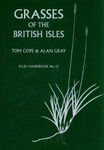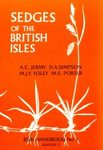Field / Identification Guide Identification Key
By: A John Richards(Author)
302 pages, colour photos, 179 b/w distribution maps
![Field Handbook to British and Irish Dandelions Field Handbook to British and Irish Dandelions]()
Click to have a closer look
About this book
Customer reviews
Related titles
About this book
The Field Handbook to British and Irish Dandelions is a completely revised edition including new Taraxacum species described over the last 24 years, updated taxonomy and nomenclature, new keys, updated BSBI distribution maps and identification notes. It will prove to be an essential successor to the original 1997 BSBI Handbook No. 9, Dudman & Richards Dandelions of Great Britain and Ireland and the Dandelion accounts in the Plant Crib.
Digital photography has revolutionised Dandelion identification, as images capturing colour and form enable plants to be named without the need for dried specimens. In this new BSBI Handbook, no. 23 in the series of Handbooks for difficult plant groups, world expert John Richards has used photographs to summarise his encyclopaedic knowledge in a new and accessible format. The images have been provided by 39 photographers, reflecting the increased interest in Dandelions.
The handbook includes a general introduction, guidance on identification, keys, accounts of the 239 species with revised descriptions, 3-6 colour images per taxon, showing key features with a distribution map, and references, a glossary and an index.
Customer Reviews
Field / Identification Guide Identification Key
By: A John Richards(Author)
302 pages, colour photos, 179 b/w distribution maps
"Dandelions are funny things. To most of us there is only one kind, the dandelion, [...] But busy specialists have identified no fewer than 239 different and distinct British dandelions, about 150 of them native, even endemic [...] This new BSBI handbook is quite something. The modern miracle of colour printing allows every dandelion species to be reproduced in colour, and with up to five images per page, and at an affordable price. There are 1,000+ images in total. Each species is examined from various angles as well as in situ in the field. The previous BSBI dandelion handbook, published 25 years ago, had to make do with silhouettes, and was really a guide to dry material in the herbarium. This, in contrast, is a field guide, a guide to living plants. Each species is mapped at 10km-square level. Each is minutely described in botanical language, with notes on key identification points and similar species. Like other BSBI handbooks, but even more so this time, it is aimed squarely at advanced field botanists and plant recorders who may want to take on this challenging but clearly ‘doable’ group of plants. With the publication of this all-colour guide many undoubtedly will. [...]"
– Peter Marren, British Wildlife 33(5), April 2022








































